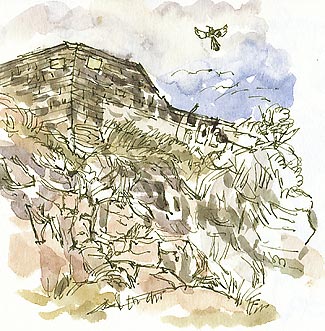 Whitebeam at Storrs Hill Quarry
Whitebeam at Storrs Hill Quarry Whitebeam at Storrs Hill Quarry
Whitebeam at Storrs Hill QuarryWild West Yorkshire, Tuesday 19 October 2010
previous | this month | next
THE NEWLY EXPOSED face of sandstone (bottom left of my sketch) is still sandy in colour, paler than the surrounding rockface which, over a period of perhaps a century or more, has developed a blackened crust with age here at the quarry below Rock House on Storrs Hill, between Horbury and Ossett. Rock House dates from the 1860s or 1870s.
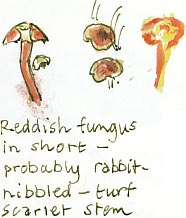 When the footpath, which passes this quarry via a landslip scar, was restored two years ago, a banking of quarry spoil that lay against the rockface here was bulldozed away in order to terrace the top of the hill. Even on this dull afternoon, a surprising number of dog walkers and school children are using the new path so that's been a success, but it looks as if the removal of this embankment of quarry waste has led to instability in the quarry face. Positioned as it was below the corner of the high sandstone wall it acted as a buttress. The sandstone here is criss-crossed with horizontal bedding planes and vertical joints, so presumably there's likely to be some movement when the buttress is removed. An 8ft square buttress of rock was left to support the centre of the quarry face. This is covered with brashings which have fallen from the garden of Rock House, following the collapse of the central section of the wall.
When the footpath, which passes this quarry via a landslip scar, was restored two years ago, a banking of quarry spoil that lay against the rockface here was bulldozed away in order to terrace the top of the hill. Even on this dull afternoon, a surprising number of dog walkers and school children are using the new path so that's been a success, but it looks as if the removal of this embankment of quarry waste has led to instability in the quarry face. Positioned as it was below the corner of the high sandstone wall it acted as a buttress. The sandstone here is criss-crossed with horizontal bedding planes and vertical joints, so presumably there's likely to be some movement when the buttress is removed. An 8ft square buttress of rock was left to support the centre of the quarry face. This is covered with brashings which have fallen from the garden of Rock House, following the collapse of the central section of the wall.
The corner of the wall is teetering on the brink and looks in imminent danger of collapse. I believe it was contractors working for the owner of Rock House who removed this spoil, if so it was rather like sawing through a branch when you're perched up a tree. I think it would have been prudent to leave the embankment in place. The wall appears to be made from sandstone quarried here on Storrs Hill.
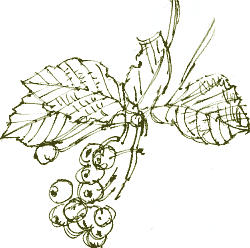
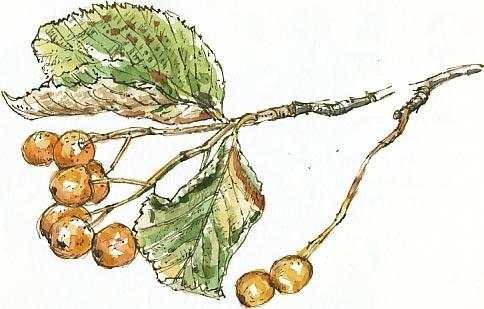 This whitebeam, Sorbus aria, was growing from the top of the quarry not far away. It is native only in southern England so this is naturalised, the seed sown in this inaccessible spot in the droppings of a bird that had been eating the berries. The whitebeam gets its name because the underside of the leaves are covered in white down. This is particularly noticeable in the spring when the leaves are unfurling.
This whitebeam, Sorbus aria, was growing from the top of the quarry not far away. It is native only in southern England so this is naturalised, the seed sown in this inaccessible spot in the droppings of a bird that had been eating the berries. The whitebeam gets its name because the underside of the leaves are covered in white down. This is particularly noticeable in the spring when the leaves are unfurling.
Beam is the Saxon word for tree but this one was half-way between being a tree and a shrub with multiple trunks of smooth grey bark.
Its timber is hard and durable; it has been used to handles for tools and the cogs for mills and machinery.
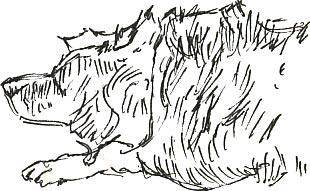
Richard Bell, illustrator
previous | this month | Wild West Yorkshire home page | next